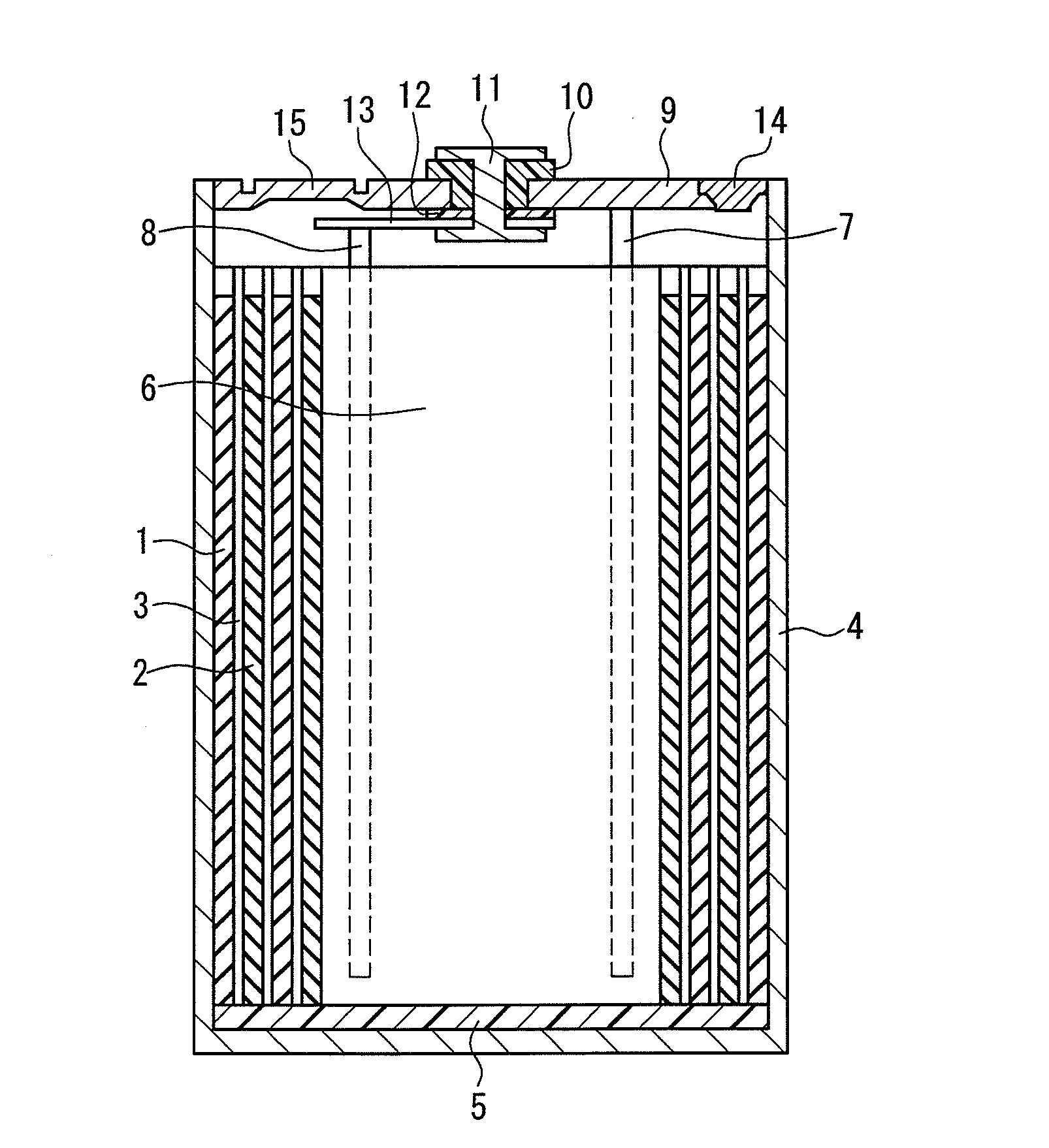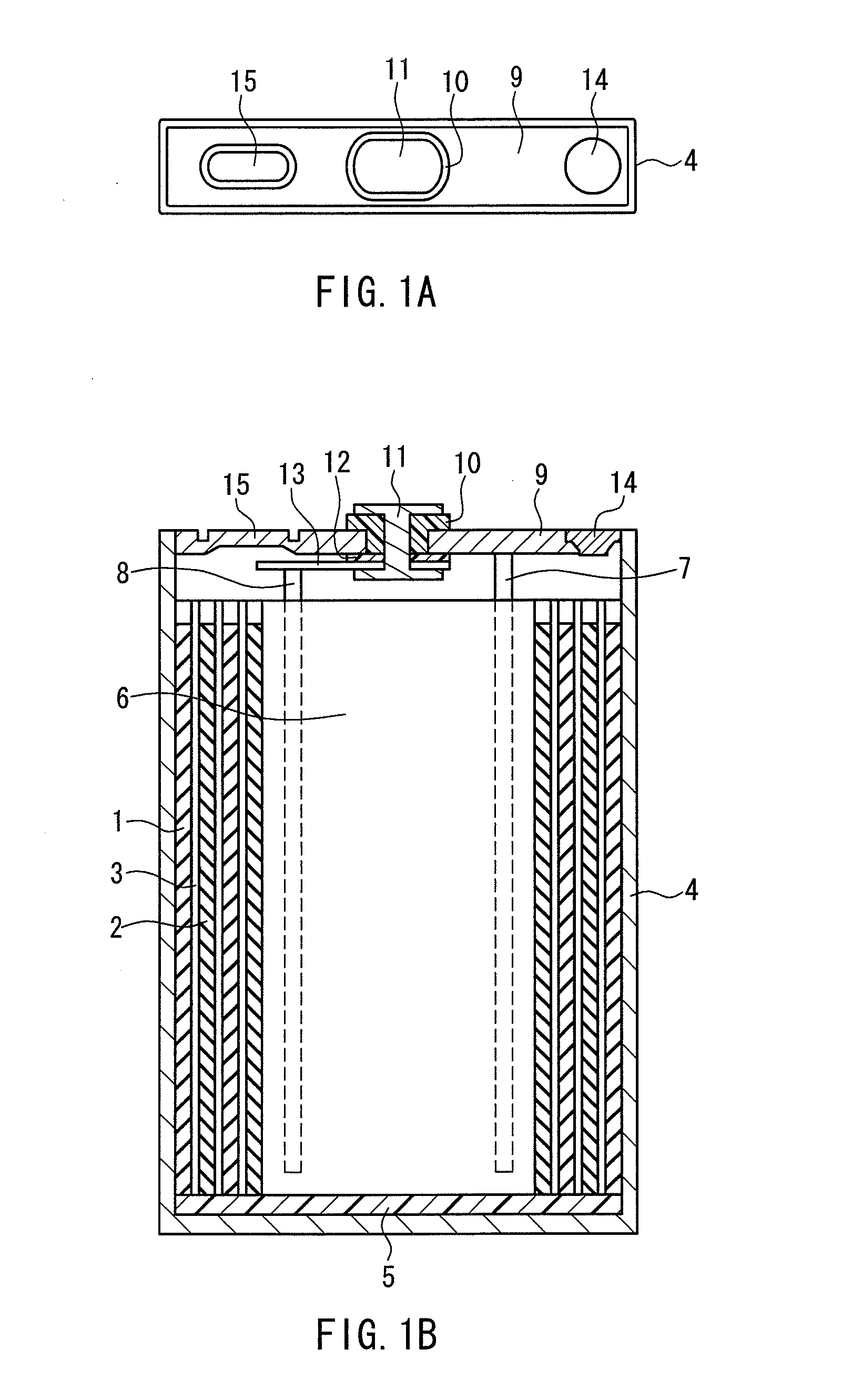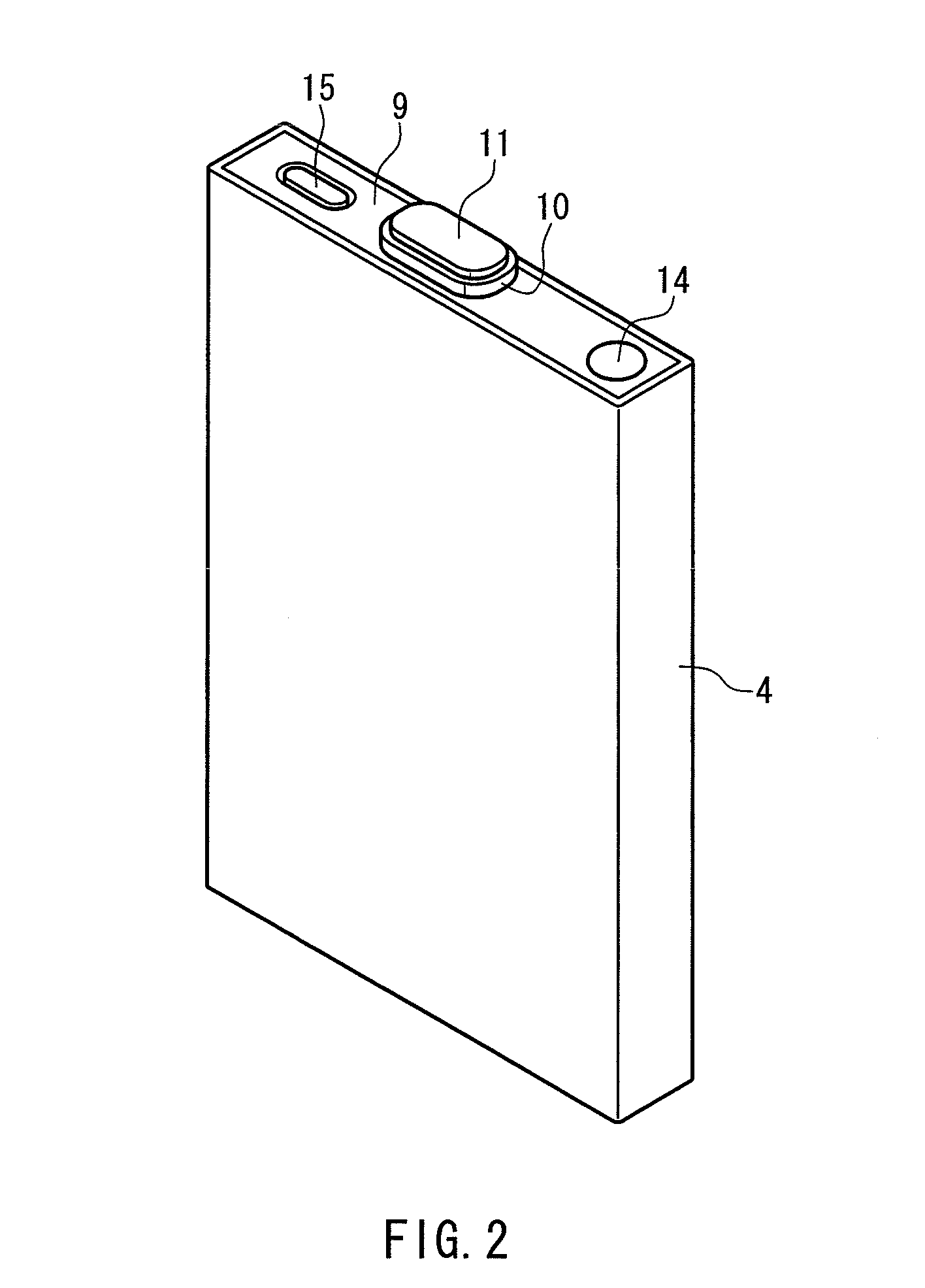Non-aqueous secondary battery
a secondary battery and non-aqueous technology, applied in the direction of non-aqueous electrolyte cells, cell components, sustainable manufacturing/processing, etc., can solve the problems of battery expansion and irreversible capacity increase, and achieve excellent storage characteristics and high capacity
- Summary
- Abstract
- Description
- Claims
- Application Information
AI Technical Summary
Benefits of technology
Problems solved by technology
Method used
Image
Examples
example 1
Preparation of Positive Electrode
[0114]Positive electrode active materials, i.e., 70 parts by mass of LiCoO2 and 30 parts by mass of LiMn0.2Ni0.6Co0.2O2, conductivity enhancing agents, i.e., 1 part by mass of artificial graphite and 1 part by mass of Ketchen black, and a binder, i.e., 10 parts by mass of PVDF, were uniformly mixed in a solvent, i.e., NMP, to prepare a positive electrode mixture-containing paste. While adjusting the thickness, the positive electrode mixture-containing paste was applied intermittently to both sides of a current collector composed of aluminium foil having a thickness of 15 μm, dried, and then calendared to adjust the thickness of a positive electrode mixture layer such that the overall thickness was 130 μm, and cutting was performed so as to have a width of 54.5 mm, thereby preparing a positive electrode. Moreover, a tab was welded to an exposed portion of the aluminium foil of the positive electrode, thus forming a lead portion.
Preparation of Negativ...
examples 2 to 4
[0129]Non-aqueous secondary batteries were produced entirely in the same manner as in Example 1 except that the amount of carbon coating of the negative electrode active material SiOx / carbon composite, the intensity ratio I510 / I1343 of the Raman spectrum, and the Si (111) diffraction peak half-width of the X-ray diffraction of SiOx were changed as presented in Table 1.
PUM
| Property | Measurement | Unit |
|---|---|---|
| particle diameter | aaaaa | aaaaa |
| temperature | aaaaa | aaaaa |
| half-width | aaaaa | aaaaa |
Abstract
Description
Claims
Application Information
 Login to View More
Login to View More - R&D
- Intellectual Property
- Life Sciences
- Materials
- Tech Scout
- Unparalleled Data Quality
- Higher Quality Content
- 60% Fewer Hallucinations
Browse by: Latest US Patents, China's latest patents, Technical Efficacy Thesaurus, Application Domain, Technology Topic, Popular Technical Reports.
© 2025 PatSnap. All rights reserved.Legal|Privacy policy|Modern Slavery Act Transparency Statement|Sitemap|About US| Contact US: help@patsnap.com



